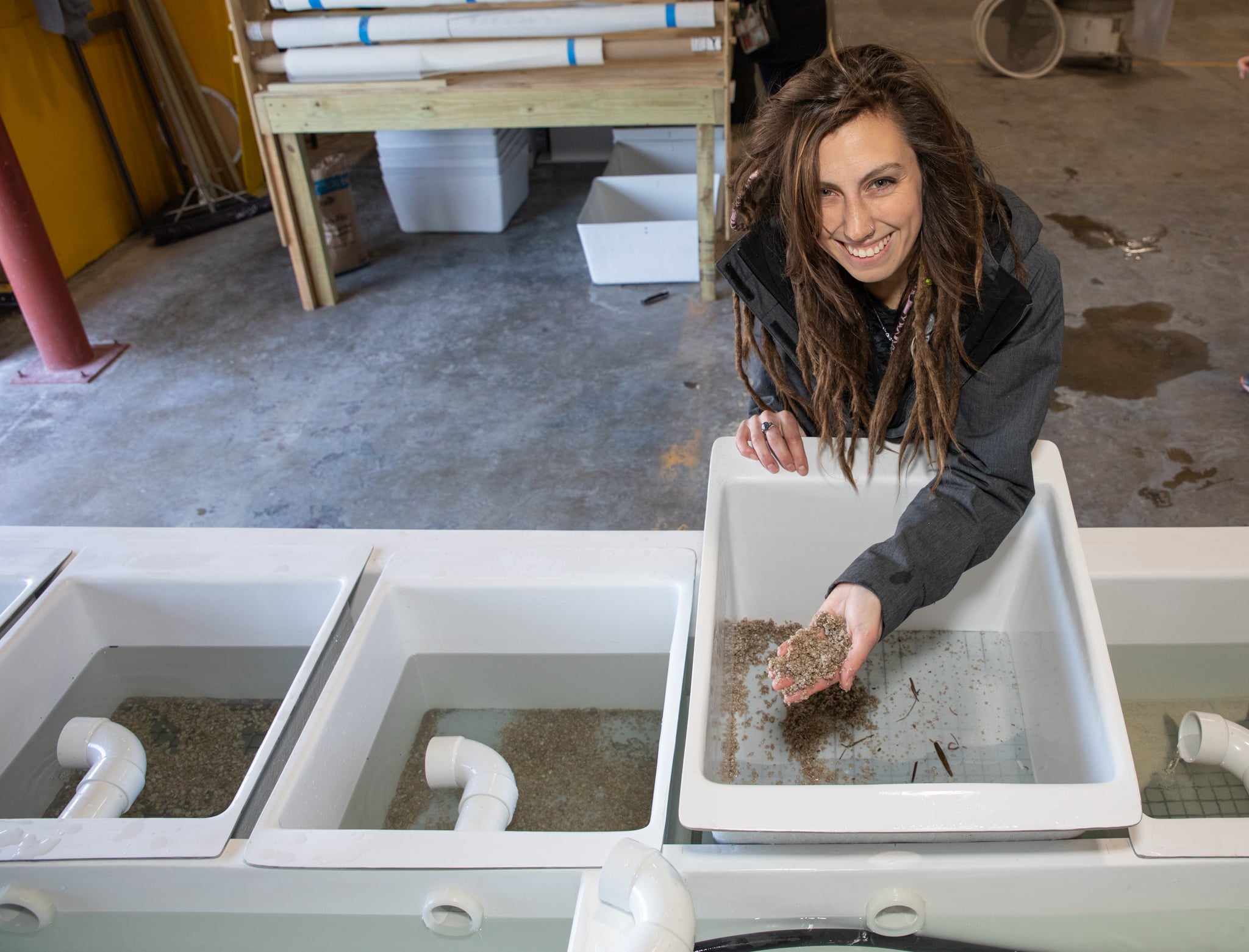The following is an excerpt from an article published June 10 in Global Aquaculture Advocate by Bonnie Waycott.
A recent study shows frequently harvested filter feeders can keep wild populations healthy
Natalie Ruark is a nursery manager at Hoopers Island Oyster Company in Cambridge, Md. She told the Advocate that farmed oysters with a high harvest rate can act as a “sink.”
“If oysters are harvested at a moderate to high rate, disease-causing pathogens can be decreased in aquaculture areas. But these farmed oysters must meet a certain quality benchmark before they can be harvested, if farmers want a good return on their investment,” she explained. “If shells are thin or poorly shaped, the oysters, although market size, will spend longer in the water to achieve a better-quality shell. This extended time increases the density of disease-causing pathogens.”
Ruark believes that the study is encouraging for farmers in her area who want to know how their practices benefit the environment.
“Aquaculture relieves the pressure on natural populations and provides an alternative to meet market demand,” she said. “As the science and best practices of oyster aquaculture advance, we can improve the symbiotic relationship with wild populations to maintain a thriving industry for both. Dr. Ben-Horin’s work provides a vital insight into what’s needed to continue the positive impact that aquaculture has provided to the oyster industry.”
To read the full article, click here.
A 2018 paper in Aquaculture Inter-Research Interactions by an investigative team led by Tal-Ben Horin, examined how “Intensive Oyster Aquaculture Can Reduce Disease Impacts on Sympatric Wild Oysters.” Global Aquaculture Advocate asked Hoopers Island Oyster Co’s Nursery Manager Natalie Ruark to review their published findings on disease mitigation. Ruark is a trained scientist with a B.S. in Environmental Studies & Biology from Randolph-Macon College.
